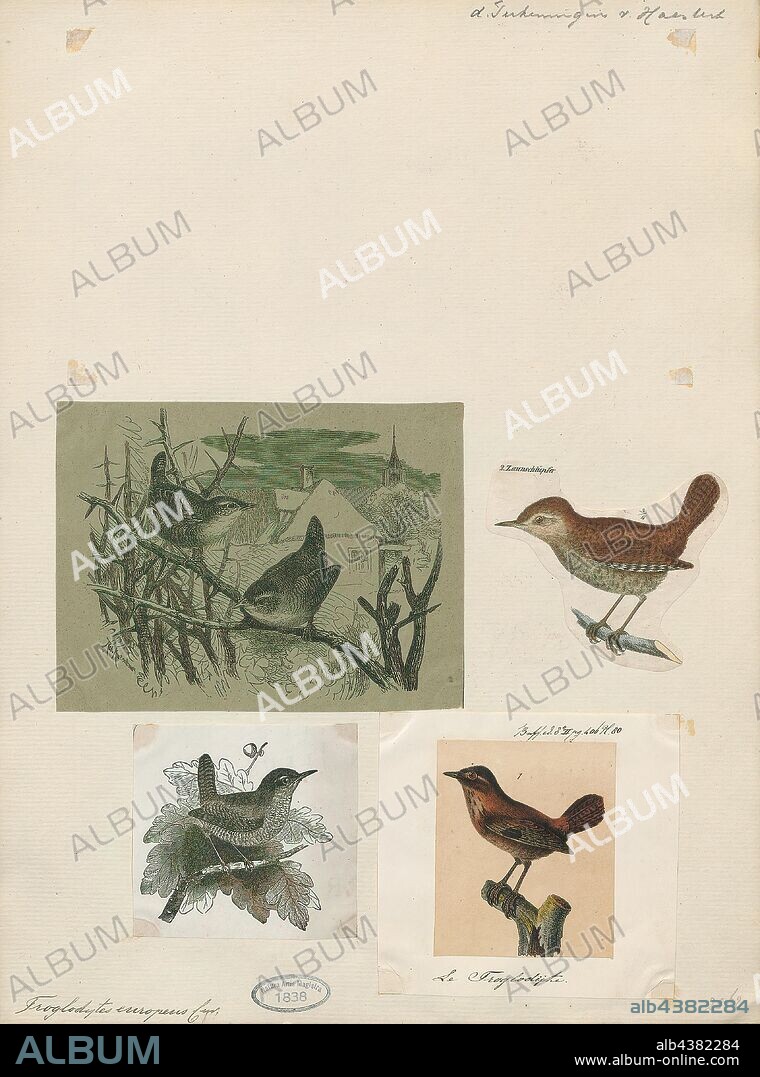alb4382284
Troglodytes parvulus, Print, The Eurasian wren (Troglodytes troglodytes) is a very small bird, and the only member of the wren family Troglodytidae found in Eurasia and Africa (Maghreb). In Anglophone Europe, it is commonly known simply as the wren. It was once lumped with Troglodytes hiemalis of eastern North America and Troglodytes pacificus of western North America as the winter wren. The Eurasian wren occurs in Europe, a belt of Asia from northern Iran and Afghanistan across to Japan. It is migratory in only the northern parts of its range. It is also highly polygynous, an unusual mating system for passerines., 1700-1880.

|
Add to another lightbox |
|
Add to another lightbox |



Buy this image.
Select the use:

Caption:
Troglodytes parvulus, Print, The Eurasian wren (Troglodytes troglodytes) is a very small bird, and the only member of the wren family Troglodytidae found in Eurasia and Africa (Maghreb). In Anglophone Europe, it is commonly known simply as the wren. It was once lumped with Troglodytes hiemalis of eastern North America and Troglodytes pacificus of western North America as the winter wren. The Eurasian wren occurs in Europe, a belt of Asia from northern Iran and Afghanistan across to Japan. It is migratory in only the northern parts of its range. It is also highly polygynous, an unusual mating system for passerines., 1700-1880
Credit:
Album / quintlox
Releases:
Image size:
3407 x 4592 px | 44.8 MB
Print size:
28.8 x 38.9 cm | 11.4 x 15.3 in (300 dpi)
Keywords:
(JAPAN) • 1700-1880 • AFGHANISTAN ACROSS • AFRICA • AFRICAN • ANGLOPHONE EUROPE • ASIA • BELT • EASTERN NORTH AMERICA • EURASIA • EURASIAN WREN • EUROPA • EUROPE • HIGHLY POLYGYNOUS • JAPAN • JAPAN. • JAPANESE • KITTY WREN • LUMPED • MAGHREB • MEMBER • MIGRATORY • NORTHERN IRAN • NORTHERN PARTS • PASSERINES • PRINT • RANGE • SIMPLY • SMALL BIRD • TROGLODYTES HIEMALIS • TROGLODYTES PACIFICUS • TROGLODYTES PARVULUS • TROGLODYTES TROGLODYTES • UNUSUAL MATING SYSTEM • WESTERN NORTH AMERICA • WINTER WREN • WREN FAMILY TROGLODYTIDAE • WREN


 Pinterest
Pinterest Twitter
Twitter Facebook
Facebook Copy link
Copy link Email
Email
